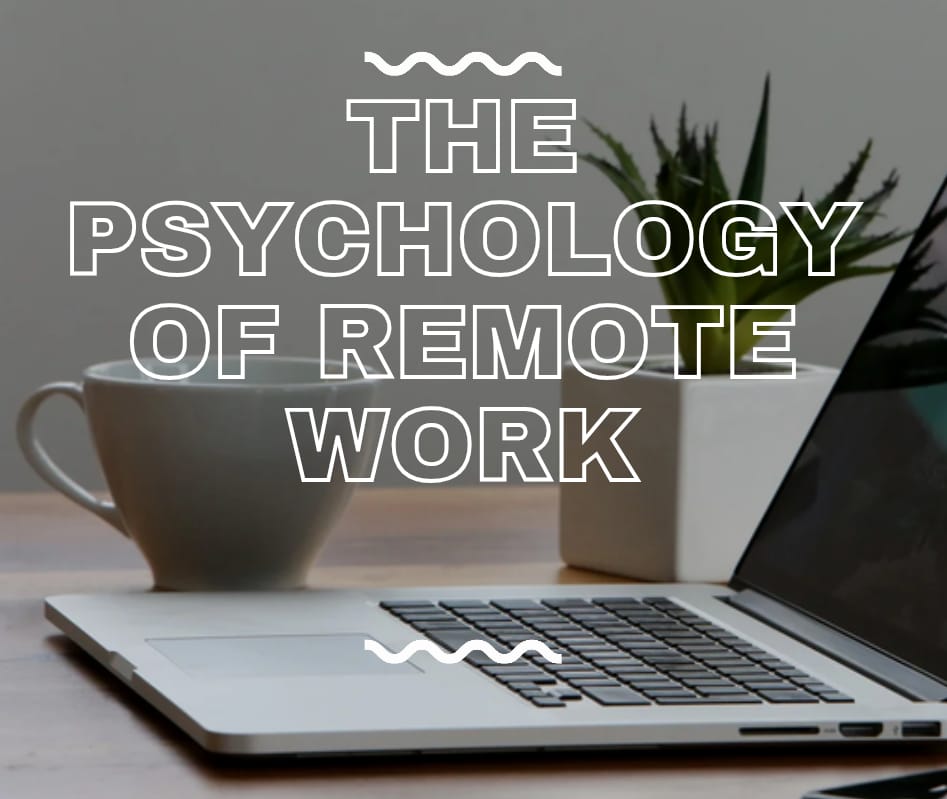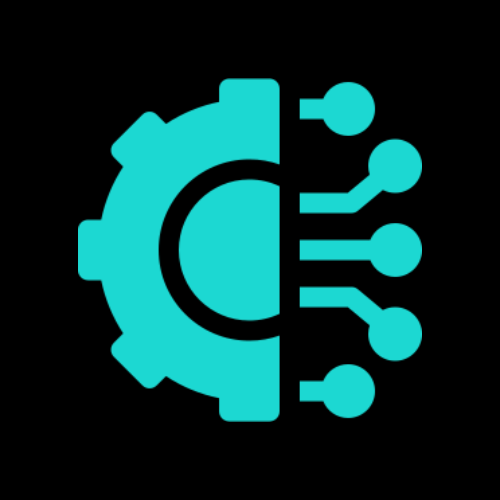What is a Remote Work?
Remote jobs are basically those jobs in which you don’t have to go to the office daily. You can work from home or anywhere where the internet is available. In remote jobs, employees and employers connect using online tools such as Zoom Meetings, Slack Chat, Google Meet, or Email. It makes the flow of work smooth without physically being present in the office.
Remote jobs offer flexible options in which you can work according to your convenience. These jobs are very popular in today’s digital era because they save time, remove the problem of commuting, and make it easier to achieve a work-life balance.
Remote jobs are becoming popular every day because they create a win-win situation for both employees and the company. Remote jobs provide flexibility to employees, as they can work from anywhere, according to their convenience, they save on the cost of travel and commute, and can spend more time with their family. Also, it is beneficial for companies as well because companies do not have to spend money on office space, electricity, and infrastructure. Besides, these companies also get the chance to hire global talent without geographical boundaries.
After COVID-19, people have gained experience from work-from-home and they realized that working from home does not reduce productivity instantly; sometimes the productivity of employees doubles. That’s why remote jobs are not only a trend, but it is a long-term career option.
Benefits of Remote Work
Flexibility in Schedule –
The biggest advantage of remote work is that you can decide the timing of your work. If you are an early riser, then you can finish your work in the early morning, and if you are a night owl, then you can work at night. With this flexibility, you can work according to your energy levels and productivity. Plus, personal errands and emergencies also become easy to handle without formally taking leave.
No Commute –
There is no office commute, which means you can save time and money on fuel. Besides these, the stress of traffic and daily travel also decreases. You can invest this extra time in your productive work or in your personal life. Plus, your health also gets better because you don’t have to go through pollution and travel fatigue.
Better Work-Life Balance –
There are unnecessary meetings, gossip, or interruptions in the office environment. In remote work you set your workspace according to your comfort zone to increase focus. Less destruction means more efficient work. This is especially for those people who want to stay self-motivated and disciplined.
Cost Savings –
Expenses are reduced in remote work because there is no cost of transportation, parking, lunch, coffee, or formal office wear. These savings become a good amount at the end of the month. You can also manage your budget better by staying at home.
Location Independence –
Remote work gives you the freedom to work from the location of your choice — whether it’s your home, a café, or a scenic hill station. This is especially beneficial for people who love to travel or don’t want to be bound to a specific city. It brings variety to your lifestyle and keeps your motivation high.
The Psychology of Remote Work for Staying Productive
1. Choosing the Right Location for Remote Work
A very important step in the remote work is choosing a location. If you do a setup in the wrong place, then distraction can increase, and productivity will decrease. Location should be according to your work’s nature. If you have to attend frequent calls and meetings, then your space should be noise-free. The size of the space also matters; you have to choose a location where your desk, chair, and storage fit comfortably. And also take care of proper ventilation and lighting to keep fresh and focused. A thoughtful location choice can improve your work experience a lot.
Quiet vs. high-traffic areas in the house
To increase productivity, you have to select a quiet area for a remote job. Do not choose the location near high traffic areas such as the living room or kitchen because family members stay and they talk or do things that increase noise. You should choose a location near the bedroom’s corner, attic, or any unused room that is peaceful. If you make sure of all these things, then you can work quietly without any interruptions and also attend meetings without any background noise. But if you do not have a quiet place and you have to use a high-traffic area, then you should use noise-cancelling headphones or room dividers to reduce distraction.
Natural lighting and window placement
Natural lighting is very important because it boosts mood and energy levels. You have to choose a corner near a big window so that sunlight can enter your workspace. But keep in mind, monitor should not be in direct sunlight, otherwise glare can happen, and eyes strain can also happen. Window placement should be in a way that you can see the natural view at the time of working because it reduces stress. If there is insufficient natural light, then use a warm LED desk lamp. The proper balance of light increases your focus, comfort, and productivity.
Separation from personal spaces
Keeping your work space separate from your personal space helps in creating clear mental boundaries. When you mix work and personal areas, your brain struggles to switch into work mode. That’s why you should try to have a workspace where there’s no influence from the bed, TV, or dining area. Having a separate space reduces distractions and helps you avoid doing personal tasks in between work. If a dedicated room isn’t possible, you can use a room divider, bookshelf, or screen to create a separate zone. This clear separation greatly helps in maintaining a healthy work-life balance.
2. Ergonomic Setup for Remote Work
Ideal desk height and chair support
The height of the desk and chair support plays an important role in the remote work support. If the desk is too high or too low, then you can suffer from shoulder pain, neck pain, and wrist strain. The height of an ideal desk is usually 28 to 30 inches but you have to adjust according to your height. The chair’s lumber support should be strong so that your lower back can stay comfortable. A chair with adjustable height and reclining features is beneficial because you can adjust the position according to your comfort. A good combination of desk and chair improves your posture and makes it easy to work for long hours.
Monitor placement to reduce eye strain
The wrong placement of a monitor can cause eye strain, headache, and neck pain. An ideal placement of the screen is that the top of the screen should be at the level of your eyes and the monitor should be 22-30 inches away from you. You should set the screen a little tilt to reduce glare and increase focus. If you use a laptop, then keep the laptop on a stand and use an external keyboard and mouse. Maintaining Proper monitor height and distance cannot only protect your eyes, but it also corrects your posture, which is good for your long-term health.
Keyboard and mouse positioning for comfort
The placement of the keyboard and mouse is also a crucial part of an ergonomic setup. Keep them at a height where your elbows naturally form a 90-degree angle. If the keyboard is too high, your shoulders may become stiff; if it’s too low, it can strain your wrists. Keep the mouse close to the keyboard to avoid unnecessary arm stretching. Using a wrist rest can also improve comfort. If you have long typing sessions, choose a mechanical or ergonomic keyboard. The right positioning reduces the risk of repetitive strain injuries and makes the typing experience much smoother.
3. Lighting for Focus
Natural light benefits
Natural light has a positive impact on mood, energy levels, and productivity. Working in sunlight balances the circadian rhythm in the body, which makes you more alert and feel focused. Natural light reduces eye strain because it does not give liquor or horse glare like artificial lights. That’s why setting a desk near a window is best for a remote work. But sunlight can create glare on the monitor, which is why we use curtains to control it. Natural sunlight improves overall work quality because it reduces your stress level.
Task lighting (desk lamps)
Task lighting means a focus light that gives direct light to your work area, like a desk lamp for reading, writing, or laptop work. It is especially very useful when the natural light is very low, like in the evening or on cloudy days. At the time of choosing this clamp, you should consider the features of the adjustable neck and the brightness control of the desk lamp so that you can set the angle of light and intensity according to your comfort. Warm light is very good for reading and cool light increases focus in detail work. Proper task lighting reduces eye strain and improves clarity and accuracy.
4. Technology & Equipment
Reliable internet connection
Reliable internet connection is a basic necessity of remote work because a slow or unstable network affects productivity directly. The flow of the internet can create frustration during frequent video calls, large file uploads, or when using cloud-based tools. Choosing a high-speed broadband plan is very important because it balances between upload and download speed. Having a Mobile hotspot or a secondary internet connection is a smart move for a backup plan. Place the router in a Central location and use a wired connection if possible because it is more stable than Wi-Fi. You can work uninterrupted and meet deadlines smoothly with a reliable internet connection.
Essential accessories (headset, webcam, second monitor)
Some essential accessories of a home office increase productivity and communication. A headset with a noise-cancelling feature minimizes noise and gives clarity in video calls. A good quality webcam increases professional appearance, which gives a positive impression to the client in meetings or in interviews. A second monitor is very useful for multitasking. Do research on one screen and write or design on another screen. This method is very convenient. Investing in these accessories boosts long-term productivity. Besides this introducing work stress and making work flow smoothly, especially in remote jobs.
6. Organization & Storage
Organization is very important in a remote work because clutter directly impacts focus and efficiency. You can neatly arrange book files and decorative items by using cells, which is helpful to avoid gathering unnecessary things on the desk. Small drawers are perfect for small items such as stationery, chargers, and important documents so that they stay handy without creating visible clutter. Arrange wires neatly with the help of cable management tools like clips, sleeves, or cable boxes. Because tangled cables make work space messy. When everything is in its fixed place, it saves your time and makes work flow smoother.
7. Personalization Without Distraction
Inspiring décor (plants, art, vision boards)
Inspiring décor in the remote work boosts productivity and mood. Keeping one or two indoor plants on the desk creates a fresh environment and reduces stress levels. Plants like peace lilies or snake plants are of low maintenance and improve air quality. Sticking motivational quotes, calming artwork, or a vision board on the wall improves motivation because you can see your goals and creative ideas everyday. But you have to make sure that the décor is not so cluttered because extra items divert the focus. Simple and meaningful décor is enough to keep you inspired.
Color psychology for productivity
Color has a strong impact on mood and focus, so the choice of the right color in the home office is very important. Blue shades promote calmness and concentration, which is perfect for detail-oriented work. Green relaxes our eyes and boosts creativity, which is why using plants or green accents is beneficial. Yellow creates positivity and energy, but excess can cause distraction. Neutral tones like white, beige, or light grey give a minimal and clean look, which makes the focus. Smart use of color psychology makes your work productive and pleasant.
8. Digital Workspace Setup
Organizing your desktop and files
Keeping the digital workplace organized is as important as having a tidy physical desk. If your digital workspace is not organized like, files and folders are not organized on the desktop, then finding any document can be time-consuming. That’s why, arrange your files in folders according to category, such as work, personal, project, or invoices. You should keep the naming system clear so that you can find it instantly at the time of search. Delete all the unused or old files and create a backup on cloud storage so that there is no data loss risk. A clean digital workspace improves your focus and allows you to complete your work faster.
Setting up communication platforms (Zoom, Slack, etc.) efficiently
In remote work, communication platforms like Zoom, Slack, or Google Meet are essential for smooth collaboration. Setting them up efficiently boosts productivity. In Zoom, set up meeting links, recurring schedules, and virtual backgrounds in advance to avoid last-minute rush. In Slack or Teams, organize channels by topic and mute unnecessary notifications to reduce distractions. It’s also important to check the connection of your headset and webcam to avoid technical glitches. Properly optimized communication tools make meetings smoother, ensure messages are delivered clearly, and make teamwork much more effective.
Conclusion
This article explored the psychological aspects of remote work — from the challenges of isolation and burnout to the benefits of flexibility, freedom, and better work-life balance. It also discussed effective strategies to stay mentally healthy, productive, and socially connected while working from home.
By understanding the psychology behind remote work, you can create a routine and environment that supports both happiness and high performance. Whether you’re an employee, freelancer, or business owner, these insights will help you maintain motivation, build strong connections, and enjoy a more fulfilling remote work experience.
Explore more insightful blogs here.







Leave a Reply